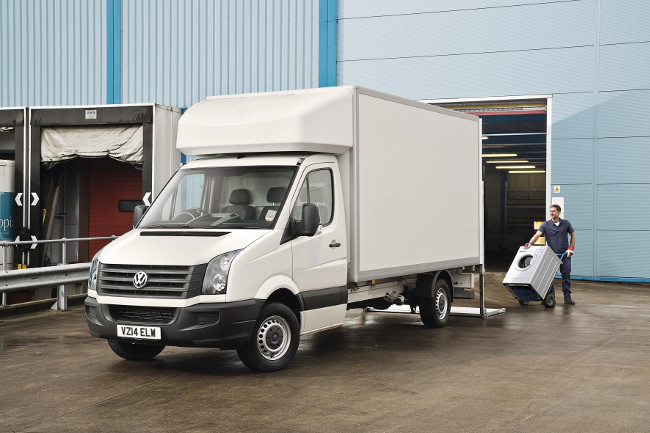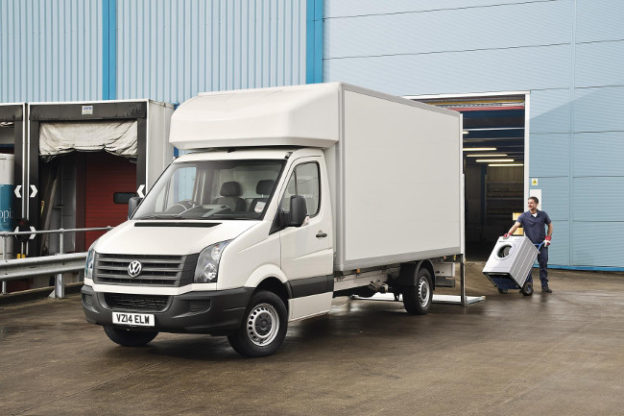
A Volkswagen Crafter-based Luton van, with tail lift.
If you’re not used to hiring a van, it isn’t always easy to know what size to choose. That’s why we’re running this blog series. We’re taking a look at the popular sizes of vans offered by the hire companies who supply the results for our price comparison system.
Today we’re looking at luton vans, which are top choices for small house removals, furniture and other bulky items. I’ll explain why in a minute, but first here’s a quick reminder of the van sizes we’ve already covered:
What’s a luton van?
Named after the Bedfordshire town of Luton in which they were invented, luton vans have box bodies on top of a van chassis. If this sounds too technical, then what you need to know is that they provide a wide square load area that’s ideal for furniture and household goods.
Luton vans also have vertical sides, making it easier to strap tall heavy objects like furniture into place securely.
The final characteristic of a luton is the storage area that sticks out over the driver’s cab. This isn’t suitable for heavy items but is ideal for large, bulky light items. For example, clothes, bedding and sofa cushions.
How big is a luton? The length of the body will vary, but a typical example designed for removals might be 4m long, 2m wide and 2m high. In a standard luton, this will be a completely square space — there are no wheel arches as the luton body sits above the wheels (like in the picture above).
What can you fit in a luton van? The large, square shape of these vans makes them ideally suited for furniture and other bulky object such as washing machines, fridge-freezers and so on. I’ve moved house from a one-bedroom flat with our furniture in a Luton without a problem.
Is there anything that won’t fit? One area where you might have problems is if you’re not able to use the space effectively. Removal men are expert at fitting huge amounts into these compact vans. The trick is to use the space inside the van as fully as possible.
So furniture might be stacked or perhaps stood on its end, and then strapped to the side of the van. Doing this requires a bit of thought if you want to avoid any damage. You’ll also need plenty of old blankets, suitable straps and at two pairs of strong arms!
The other area that might be a problem is weight. The payload of a standard 3.5t luton is typically around 1,000kg. Furniture and household goods probably won’t be a problem. But if you’re moving something heavy, such as packs of bricks or tiles, then you may use up your weight allowance before you run out of space. A panel van is often better for this kind of work.
Tail lifts: The load deck of a luton is quite high off the ground, as the luton body normally sits above the wheels. Many luton hire vans come with a tail lift. This allows you to lift raise heavy items from ground level up to the level of the load floor, from where you can lift them inside the van.
Tail lifts often have a load capacity of 500kg, although this can vary. The downside of a tail lift is that it’s quite heavy, so it reduces the amount of weight you can carry inside the van.
Not all luton hire vans have a tail lift, so if you need one, make sure it’s listed when you book — or ask.
Coming next: In the final instalment of this series we’ll take a look at 3.5t dropside and tipper vans.

